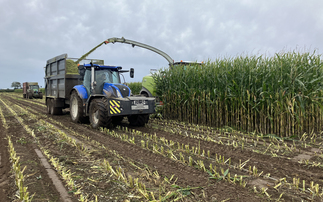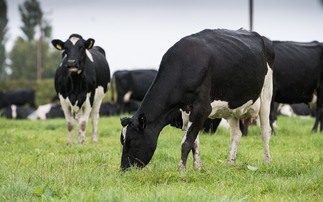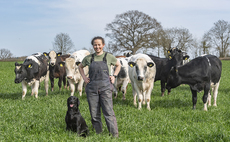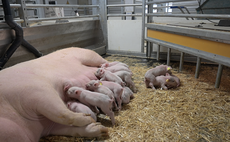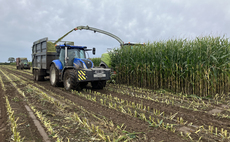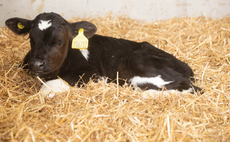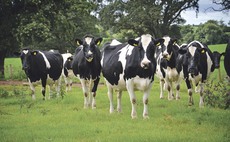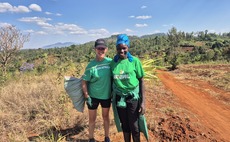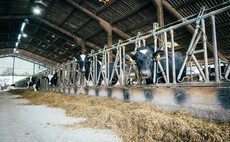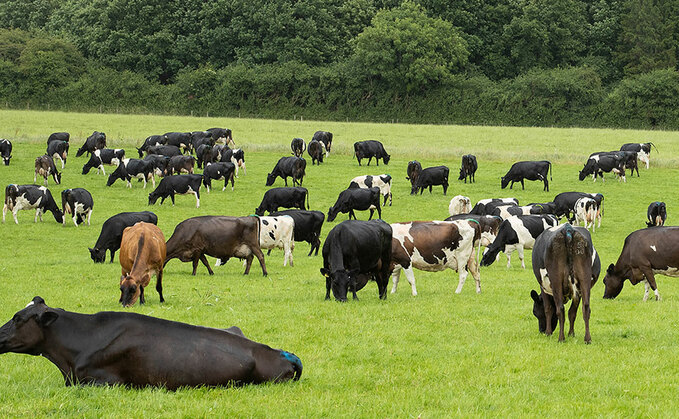
Cow environment in the dry period can be a major source of mastitis. Debbie James gets expert advice from Andrew Tyrer, a veterinary consultant at Zoetis, on how to minimise that risk.
UK dairy farmers are underestimating the importance of the dry period for mastitis control.
In a recent udder health survey by Zoetis, only 17% of the 234 farmers involved considered this stage to be the primary source of infection on their farm.
But Mr Tyrer says data from herds which have had a full mastitis control investigation show this figure is closer to 50%, highlighting the importance of preventative measures during this time.
Mr Tyrer says: A total of 60% of clinical mastitis cases in the first 100 days originate in the dry period.
There is sometimes a tendency for dry cows to be given less attention than the milking herd, but they should be treated with equal care and kept in a clean, dry and appropriately stocked environment.
His advice on how to keep udders healthy during the dry period falls into five key areas.
1 Assess the cow environment
The dry cow environment must be managed with the same level of hygiene and comfort as for milking cows.
For cows which are housed during the dry period, ensure there is nothing in the building that poses a risk of injury, as any wounds can result in bacteria colonising the teats and udder. Ventilation must be good too - cows are at their most comfortable in temperatures below 25degC - but avoid creating draughts.
Mr Tyrer says a clean and dry environment is important to reduce bacterial populations on bedding - as a guide, AHDB recommends that for every dry cow housed in a loosebedded straw yard, provide 250kg of bedding materials a month.
He says: A visual assessment can help to tell you if bedding is adequate. If the bedding is compact and a bit wet underfoot, it is most certainly an unhealthy environment for the cow.
When dry cows are managed at pasture, aim to keep them in the same paddock for no more than two weeks, then rest that paddock for at least four weeks after that. This prevents a build-up of mastitis-causing bacteria and stops the ground from becoming poached.
Further management considerations to reduce the risk of mastitis in this environment include maintaining adequate field drainage to avoid surface flooding or severe poaching and moving dry cows to a different field if the land or gateways become badly poached.
If possible, it is sensible to use multiple gateways to manage poaching or to spread bark in gateways and around feeders.
2 Avoid overstocking
Overstocking in a housed environment will increase the chances of udders becoming contaminated. Research has shown that for a cow producing an annual average milk yield of 10,000 litres, a space allocation of 12.5sq.m each is needed.
Cubicles for dry cow groups at any stage should conform to the same standard as for the milking cows - to
be size-appropriate and with at least 5% more cubicles available than the number of cows.
For cows at pasture, a stocking density no greater than 247 cows/ hectares/day (100 cows/acre/day) is advised for example a minimum of 5.6ha (14 acres) for 100 cows in a two-week period.
3 Hygiene at drying off
Drying off should be a specific task, not a job done at the end of milking, and an exceptional level of cleanliness is vital.
Pre-dip cows and wipe each teat with an individual paper towel, working from the teats furthest away to closest. Individually and very thoroughly wipe each teat end with cotton wool soaked in surgical spirit and then administer appropriate dry cow medications.
Mr Tyrer recommends disinfecting teats and administering dry cow therapy one teat at a time, beginning with the teat the furthest away.
For cows identified as needing sealant only, administer sealant utilising the correct infusion technique, taking care not to massage into the udder by holding the top of the teat.
Administer antibiotic tubes to cows identified as needing treatment followed by sealant, then dip all teats.
Apply tape to the tails of treated cows to ensure easy identification at calving. Inspect cows daily in the first week after drying off.
Mr Tyrer says: It is hard to overemphasise how important a thorough teat end disinfection is in the drying off process.
It is a very positive situation that so many farmers are now using selective dry cow therapy, but farmers must bear in mind that the highest level of hygiene is needed when using a teat sealant, especially when used in isolation, without antibiotics.
4 Use teat sealant to prevent new intramammary infections
A teat can take two weeks to form a natural seal; in some cases no seal will ever form.
OrbeSeal acts to provide an effective barrier in the teat end and has been proven to reduce infection in the dry period by 33% on average.
Good hygiene is crucially important when administering it.
Mr Tyrer says: If it is administered in a dirty environment, you can easily introduce bugs such as E.coli and Staph aureus into the udder, which is why the drying off process must be meticulous.
In extreme cases, infection at drying off can result in toxic shock and death within 48 hours.
5 Get cows at the correct body condition score
Cows should ideally be at body condition score 2.5 or 3 at drying off, which should then be maintained throughout the dry period.
Mr Tyrer says every farm should aim to get more than 90% of its herd at that score.
He says: If a cow is not too thin and not too fat, her immune system is better able to fight off infection.
Many veterinary practices now have vet technicians trained in body condition scoring to help farmers meet these targets.
Mr Tyrer says: Body condition score monthly and consider increasing it to fortnightly in the dry period.
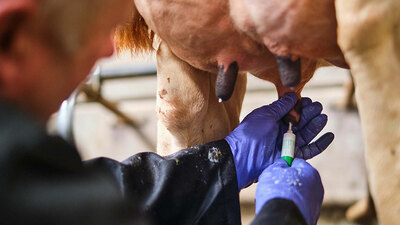
Word from the sponsor
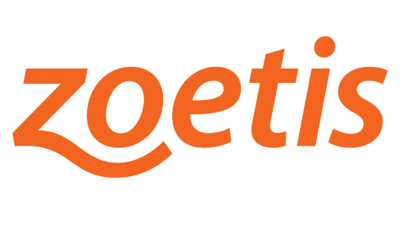
As the worlds leading animal health company, Zoetis is driven by a singular purpose: to nurture our world and humankind by advancing care for animals.
After nearly 70 years innovating ways to predict, prevent, detect, and treat animal illness, Zoetis continues to stand by those raising and caring for animals worldwide - from livestock farmers to veterinarians and pet owners. The companys
leading portfolio and pipeline of medicines, vaccines, diagnostics, and technologies make a difference in over 100 countries.













